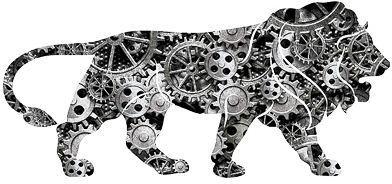Make in India
About Make in India

The initiative basically promises the investors – both domestic and overseas – a conducive environment to turn 125 crore population strong-India a manufacturing hub and something that will also create job opportunities.
That’s in effect a plunge into a serious business but it is also punctuated with two inherent elements in any innovation – new avenues or tapping of opportunities and facing the challenges to keep the right balance. The political leadership is widely expected to be populist; but ‘Make in India’ initiative is actually seen as a judicious mix of economic prudence, administrative reforms and thus catering to the call of people’s mandate – an aspiring India.
The vision statement of official website, www.makeinindia.gov.in commits to achieve for the country among other things an increase in manufacturing sector growth to 12-14 % per annum over the medium term, increase in the share of manufacturing in the country’s Gross Domestic Product from 16% to 25% by 2022 and importantly to create 100 million additional jobs by 2022 in the manufacturing sector alone. These are quite highly ambitious targets given the background that the manufacturing sector in India, which accounts for fourth-fifth of the total output, grew a meagre 3.3 per cent in January 2010.
Achievable Targets
- Target of an increase in manufacturing sector growth to 12-14% per annum over the medium term.
- An increase in the share of manufacturing in the country’s Gross Domestic Product from 16% to 25% by 2022.
- To create 100 million additional jobs by 2022 in manufacturing sector.
- Creation of appropriate skill sets among rural migrants and the urban poor for inclusive growth.
- An increase in domestic value addition and technological depth in manufacturing.
- Enhancing the global competitiveness of the Indian manufacturing sector.
- Ensuring sustainability of growth, particularly with regard to environment.
The country is expected to rank amongst the world’s top three growth economies and amongst the top three manufacturing destinations by as early as 2020. This is far more ambitious scene than promised about 2050 sometime back in the context of India’s role at the BRICS level. Indian manufacturing sector has positive elements like “favourable demographic dividends” for the next 2-3 decades. The sustained availability of quality workforce is another advantage. The cost of manpower is relatively low as compared to other countries. There are responsible business houses operating with credibility and professionalism. The country has a democratized polity vis-à-vis the rule of law and a strong consumerism intake ability of the domestic market.
Favourable Milestones
- India has already marked its presence as one of the fastest growing economies of the world.
- The country is expected to rank amongst the world’s top three growth economies and amongst the top three manufacturing destinations by 2020.
- Favourable demographic dividends for the next 2-3 decades. Sustained availability of quality workforce.
- The cost of manpower is relatively low as compared to other countries.
- Responsible business houses operating with credibility and professionalism.
- Strong consumerism in the domestic market.
- Strong technical and engineering capabilities backed by top-notch scientific and technical institutes.
- Well-regulated and stable financial markets open to foreign investors.
A technology acquisition and development fund has been proposed for the acquisition of appropriate technologies, the creation of a patent pool and the development of domestic manufacturing of equipment used for controlling pollution and reducing energy consumption.
This fund will also function as an autonomous patent pool and licensing agency. It will purchase intellectual property rights from patent holders.
Training of Workforce
The manufacturing sector cannot develop on its own without skilled labour force and in this context it is heartening to note the government’s initiatives for skill development. The creation of appropriate skill would definitely set rural migrants and the urban poor on a track towards inclusive growth. That would be a vital step for boosting manufacturing.
The New Ministry for Skill Development and Entrepreneurship has initiated the process of revising the National Policy on Skill Development. It is significant to note that under the Rural Development ministry, Government has undertaken another new initiative for skill development programme named Deen Dayal Upadhyaya Grameen Kaushalya Yojana (DDU-GKY) - Skill Development for Inclusive Growth
The new training programme envisages setting up of at least 1500 to 2000 training centres across the country and the entire project would result in an estimated expenditure of Rs 2000 crore and will be run on PPP model.
The new training programme would enable the youths to get jobs in demand-oriented markets like Spain, US, Japan, Russia, France, China, UK and West Asia. The government proposes to train about 3 lakh youths annually in first two years and by the end of 2017, it has set a target of reaching out to as many as 10 lakh rural youths.
Source: Press Information Bureau
Last Modified : 3/4/2020
Provides information about National Medical Device...
